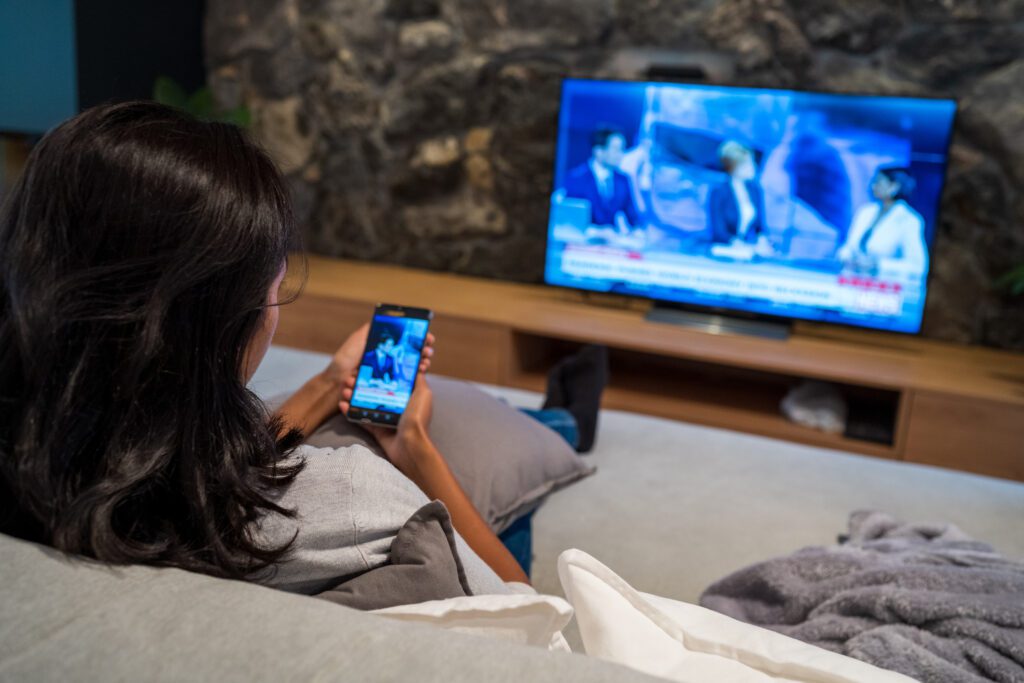Learning from the Biden Team’s Local TV Strategy
In 2020, the Biden team embraced an audience-first approach, relying on near-real-time Set Top Box viewership data to identify ways to boost reach and make their ad dollars go further.


Buying ad time on local television isn’t a novel tactic for political media strategists. But what was new in 2020 was the reliance on a data-driven strategy to increase scale and efficiently reach a targeted audience across niche networks.
Joe Biden’s team embraced an audience-first approach, relying on near-real-time Set Top Box viewership insights to identify innovative media tactics that boosted reach and made their ad dollars go further. My company was part of the team tasked with helping the presidential campaign reach swing voters on local TV. Here’s how they did it, and how other campaigns can replicate their strategy:
Start by finding the voters you want to hit.
Biden’s team started by matching voter-file data to set top box (STB) viewership insights. Next, the campaign ran a broad schedule against all available networks and dayparts in June 2020 for an initial “test and learn” approach. The initial results showed that the long tail networks that are traditionally lower rated and usually known for efficient pricing, also delivered a significant voter audience size when considered in aggregate.
Chris Huttman, head media buyer and strategist for Biden’s campaign, told me that incorporating these additional networks allowed the campaign to get into dayparts where other candidates weren’t spending while still hitting their target audience. Once their approach was validated, the campaign realized it could buy 10 times the impressions for the same investment levels.
Local cable can maximize reach cheaply.
Adding cable to the local broadcast buy lifted incremental reach points by 15 percent with an average cost per point three-times lower than broadcast. In fact, the only way to increase reach in the current fragmented marketplace is to add different media channels. The reach fragmentation approach of aggregating audiences across multiple networks exposed more people to a message at a lower cost.
To confirm we achieved those efficiencies, we looked at the Biden buys in Phoenix designated media area (DMA), during the week of Sept. 15, 2020, which has historically been a very active political period. Taking the same voter file that provided the viewership insights matched against when the ads ran, we were able to provide understandings into unique reach, frequency, and cost efficiency.
The analysis showed a 38-percent lower average cost per spot bought across four times more networks.
Meanwhile, 7.7-times more spots were purchased by the Biden camp than the Trump campaign, as well as by other non-presidential candidates using traditional buying strategies of news and top viewership networks allowing them to have more spots in the marketplace at the same or lower cost.
The cable schedule alone increased the number of people exposed to an ad by 6.6 percent. The cable portion has a higher effective reach exposing 39% of the target audience to twenty times or less frequency at 76 percent less the cost than broadcast.
The Biden campaign knew the local TV market was going to be crazy and they needed to be smart. The plan they implemented helped win the state as confirmed by the recently completed 2020 election audit.
Comparing a presidential campaign to a down-ballot race may be a stretch, but the same principles apply. To replicate the Biden strategy, campaigns can buy third-party voter data from a vendor of their choice — I’d suggest one that is privacy compliant. That data can then be matched to the ad platform’s household viewing data to identify what networks best reach their target audience. Campaigns then combine these insights with the cost of each network to determine the efficiency.
Geographically, it’s essential a media schedule reaches only the voters in a targeted district. Local cable systems can match zip code coverage to zips from any sized district, identify what voters live in each system and reduce the number of out-of-district voters seeing the ad — something that’s possible with DMA-wide buys.
Tim Kay is VP of Political Strategy at Ampersand, a data-driven TV advertising sales and technology company.
